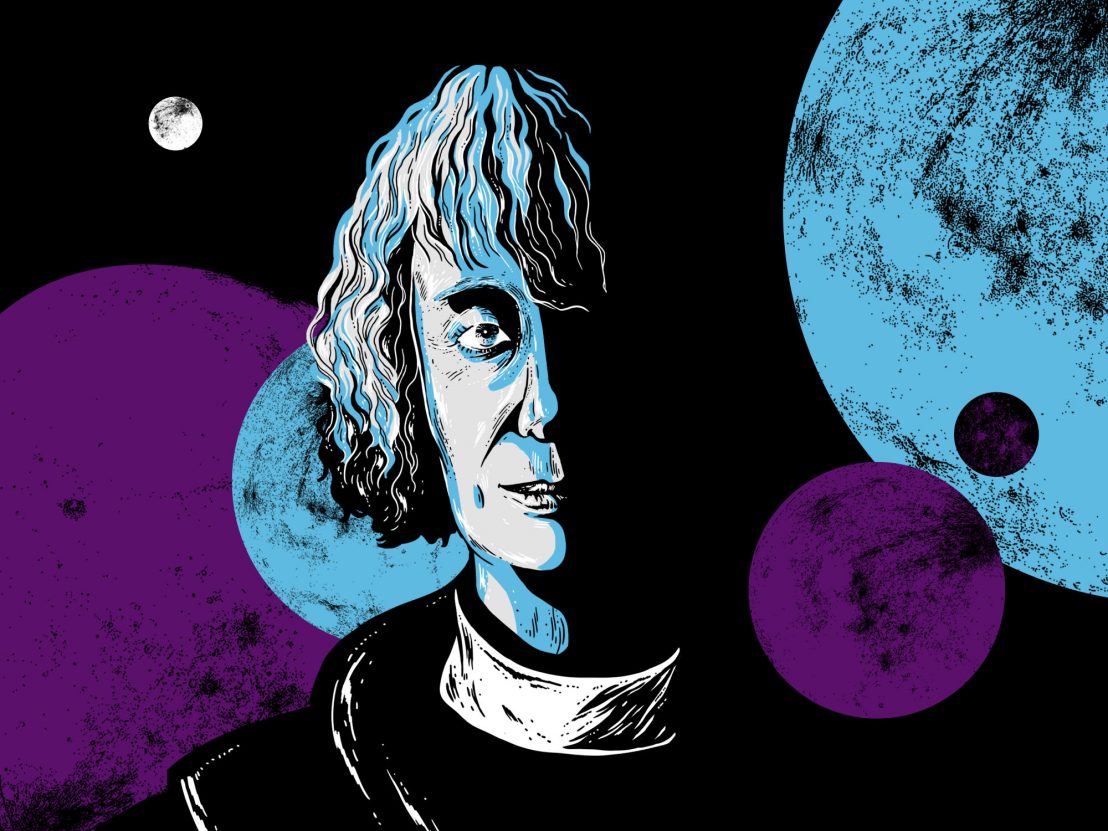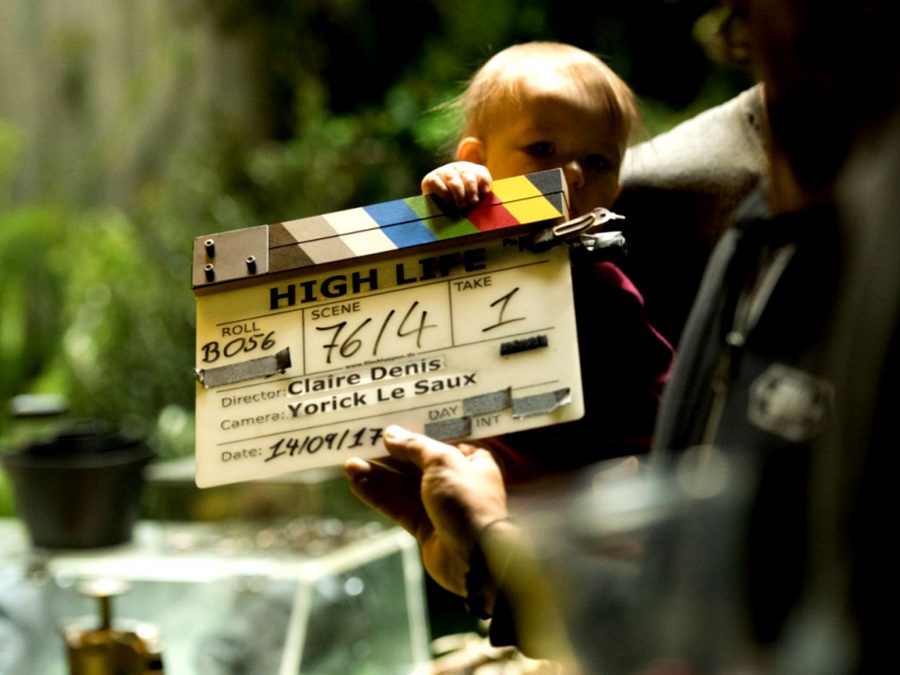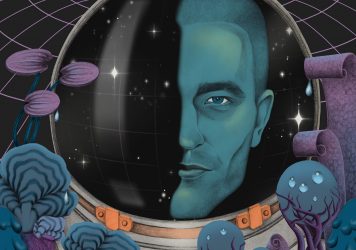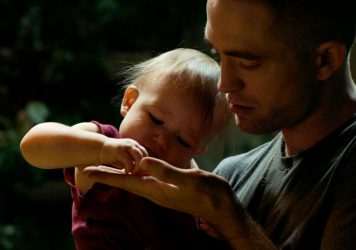
A journey through the wondrous and terrifying cinematic cosmos of the High Life director.
The British stand-up comedian Stewart Lee has a bit in which he grumbles that the internet has ruined record shopping. For him, it was all about the thrill of the chase. He cherished the romantic notion of rifling through the bins in some dusty store run by a cantankerous old git in the hope that a long yearned-for gem would suddenly present itself, like happening across buried treasure.
Technology has made this journey feel less magical, as it’s now possible to tap the title of a record into a search engine and have it mailed to you overnight. It’s practical, yes, but you lose the feeling of having grappled for this art – of proffering some basic physical exertion that, in some miniscule way, might mirror the exertions the artist undertook in the sublime act of creation. Some might argue that this brave new world allows for inclusivity and diversity. Everyone can see and hear everything instantly. But those people have never taken two trains and a bus in the hope that they might score some discounted Steely Dan rarities at a village record fair.
I had a similar relationship with film in the 1990s and early 2000s. Even though I concede that home media and digital streaming have allowed me to sample a far broader range of cinema than I might otherwise have been able to, the memories of those semi-epic journeys to one-off rep screenings are the ones that remain the most steadfast and lucid in my mind. Claire Denis’ 1999 film Beau Travail was a watershed moment for me – a private screen epiphany that altered my outlook on the function, application and emotive capacity of art.
At that time, there were only five terrestrial TV channels and, consequently, a smaller lot of broadcasting real estate had to cater to a far more expansive range of tastes. For a teenager forcibly attempting to broaden his horizons, Channel 4’s after hours programming slots – allied with a gift for being able to function the timer on an Aiwa VHS recorder – meant that a small bounty of subtitled foreign language cinema was mine for the taking.
My viewing, however, was dictated by the whims of broadcasters, which often extended to middlebrow or commercially popular hits from continental Europe (France mainly) and occasionally Asia. Among my taped-off-TV holdings were Claude Sautet’s Un Coeur en Hiver, with Emmanuelle Béart as a meek violin virtuoso, André Téchiné’s Wild Reeds, about burgeoning teenage sexuality, and Bertrand Tavernier’s L.627, a flinty chronicle of Parisian narcotics cops at work.
When I reached the point where I could no longer rely on the erratic nature of TV scheduling, I started heading out to the cinema. At this point, watching subtitled films was something of a pretentious novelty, and allowed for certain bragging rights in the schoolyard (which were often reciprocated with a mild beating or verbal scolding). But these movies ended up being a kind of gateway drug towards something more meaningful and consciousness-expanding.
My favourite cinema in London was called the Renoir, and it was owned by the arthouse film distributor Artifcial Eye (it has now been remodelled and rebranded as the Curzon Bloomsbury, and is run by Curzon, essentially the same company). I fell into the habit of visiting the Renoir on a near-weekly basis, happy to watch whatever was showing, which was nearly always a title plucked from Artifcial Eye’s stellar catalogue. The film pages of Time Out magazine acted as a guiding light, as they tended to lavish column inches on what they considered the best releases, regardless of size or provenance.
So there were trips to find out whatever Late August, Early September was, and whether Olivier Assayas was someone I should be keeping tabs on. I got my first sample of Isabelle Huppert in Claude Chabrol’s middling late work, Merci Pour la Chocolat. I was not quite ready for Raoul Ruiz’s impressionistic take on Marcel Proust’s ‘Time Regained’. Yet the one that changed everything was Beau Travail, as it was the first time I was able to grasp the notion that complexity is not always achieved through the complex treatment of material – often, the less you say, the less you show, the less you attempt to insidiously plant an idea in the viewer’s mind, the more you are able to reap the interpretive rewards of poetic brevity.
This was also the first time my appreciation of the maker sat on equal pegging with the artwork itself. So this wasn’t just a great film, it was a great film by a great artist. This was film as personal expression, ripped from the heart. My inner auteurist was born. I returned the following week to see the film again and, despite it running diametrically counter to my music tastes at the time, I purchased a CD single of Corona’s ‘The Rhythm of the Night’, which famously plays over the closing credits.
The success of Beau Travail meant that Denis’ 1989 debut film, Chocolat, based on her upbringing in Cameroon, was given another run-out, so I was able to catch up with that too. And I loved it. Two years later, and after much breathless disapproval by the critical press, Denis’ followup film, Trouble Every Day, was released, this time not by Artifcial Eye but by their more genre-driven rival, the now-defunct Tartan Releasing.
The film, a contemporary fable connecting vampirism to erotic lust, in many ways was the perfect follow-up to Beau Travail, itself about love as a self-immolating force. Images from Trouble Every Day lingered with me, unpleasant and ugly ones mainly. Béatrice Dalle’s Coré gnawing through Nicolas Duvauchelle’s lip was a nightmare moment, but one convincingly fuelled by unwieldy desire rather than as a piece of cosmetic visual transgression.
I am now unable to visualise a situation where I won’t go and see one of Denis’ movies at the earliest available opportunity. She embodies a sensibility that automatically makes her work enriching and vital. It’s not what she’s saying, it’s the language, the intonation, the timbre, the pitch, the come-hither lugubriousness in which she’s saying it. It’s understandable that some might find 2013’s Bastards a tough watch, as it is an unremittingly bleak neo-noir which sees Vincent Lindon coerced into solving a lurid sex crime. But it’s a film that comes into its own when the tactile qualities of its form gravitate to the fore.
There is something ambient about how Denis makes films. She does not take images for granted, and there is a thrill that comes from the deceptively simple process of how she fuses one image to the next. In 2002’s Friday Night, about a one-night stand which occurs during a transit strike in Paris, Denis uses slow, judiciously applied cross-fades to evoke the dreamlike aspects of this urban sexual fantasy.
Her new film, High Life, delivers us into the outer reaches of the galaxy, into the solitary confinement of deep space. It is Denis’ full English-language debut, with Robert Pattinson, Juliette Binoche and Mia Goth in the lead roles. The film is about death row convicts aboard a prison vessel who have given their lives over to science in return for an indefinite stay of execution. Binoche’s Dr Dibs attempts to simulate procreation on the ship. Pattinson’s Monte, meanwhile, keeps himself to himself as tempers are among his shipmates.
Talking to Denis about her films is not dissimilar to watching them – she is tactile and impassioned, and humble when it comes to discussing the profound intimations of the stories she tells.

LWLies: High Life feels like a big movie.
Denis: I don’t know about that.
It’s hard to know where to start with it.
In a way, it’s a very simple film. And because it is simple, every detail matters. Suddenly it became complex. At the origin, it was a man, alone in space, with his daughter. There’s the suggestion that there’s a taboo element to this relationship. But maybe not. I was reading about convicts in a jail in Texas, and there were some people complaining about the cost of death row prisoners. The other prisoners were working in the fields. But death row inmates don’t. They are fed, they’re given a room and they don’t work. So they complained to journalists saying they should be useful for the country. And that’s how it came to me that they could be sold as test subjects for science.
There are flashbacks to characters back on Earth travelling on a train. They seem happy.
I think this is an image that belongs to America. The hobos – these kids on the train – travelling around. I remember when I was a kid being fascinated with these young people – poets and writers who were able to live without rules. Jack Kerouac comes to mind. This was the freedom of America for me. But it was a freedom I was looking at from a distance. Later I realised that it’s not an easy type of freedom. It’s a freedom you have to pay for.
Do you remember the first time you went to America?
Yes. I was on the plane from Paris to New York. I was so moved and so excited. When I arrived at customs, I was already exhausted. All my emotion was drained. My second trip was to meet Wim Wenders to work on Paris, Texas. I flew to Houston. We did location scouting in an old station wagon. We crossed from the east to the west coast. It was amazing. It was like a mystical trip. I was working with a director, making a movie, and I felt like the luckiest tourist ever. But I was not like a tourist. I was hyperaware. I was looking at the truck stops and the ways a trucker behaved, the roads, the landscape.
Was this preferable to the big cities in your eyes?
New York is New York, but when you drive around in Texas, it’s another world. I remember reaching Arizona and Wim showing me the skyline and saying, ‘Oh, I think this is the Apache mountains,’ and I very nearly fainted with joy. Of course, I kept all those emotions for myself. I was aware that it was a strange way to travel, being in the States with this German director who knew the country and spoke the language well. I was raised in Africa, I had other landscapes in mind. And suddenly, it was like a big thing in my life. I was in the country of cinema as opposed to the country of my childhood.
Do you see High Life as a more American style of film?
I think it’s not American. I have no idea. I’m not sure I know the film exactly. The only thing I know for sure is that I made it. I finished it. I screened it. And yet, I’m not sure any more. It will take a few months to realise what I’ve made.
Who do you talk to about your own films?
Stuart Staples. He is the one who will criticise me. He’s a great help. My editor. Some friends. It’s not easy for me to start a conversation about a film that I am making. I’m afraid of disturbing people. I’m afraid of looking like someone who is begging for affirmation. I don’t know. In the end, when there is a retrospective, I’ll see a film I made five or six years ago, and I’ll think, ‘Ahh, this is it! Now I see!’
So you are discovering the film after it’s made?
When you’re shooting. When there’s a schedule. You have discussions with the DoP, or the actors, or the art director. Suddenly, things are so precise that it’s really the film you’re talking about. In the editing room, already, discussion is precise, but there is a sense of judgement. Ahh, shit, what did I do?! On the set, there is naivety. There is freedom. I remember after two days of shooting, Robert was in his bunk. I said, ‘Robert, I’m sorry, I have to tell you something. I will have to touch you.’ I have to touch the actors. I try not to touch the actors too much. I like to move a hand or a posture. Juliette Binoche knows this already. But I thought Robert might be shocked.
Is that type of intervention expected on set?
It is expected, but not the way I do it. I am not intruding. I am being very discreet. I could give instructions from a distance, but I would prefer to mould. People are not offended, but they are surprised. Juliette loved that touching direction.
Do you have to explain to people how you work?
I never dare to say that. I’m too shy. It’s all in the moment. I like to declare. I’m going to touch you! Beware! Robert wrote to me saying that he never expected me to be such a punk. I said, you think so? I always think I’m so sweet. ‘I didn’t know what we were doing but I trusted you,’ he said. It was weird to hear that.
Punk seems something that’s very positive. It’s cool.
Probably, but I was surprised.
Punk is very emotional and impulsive.
Yes, I am emotional. That’s for sure.
High Life is released 10 May. Read the LWLies Recommends review.
Published 8 May 2019

Join us on a trip to the outer-reaches of the galaxy with Claire Denis’ spellbinding space odyssey.

By Luís Azevedo
Filtering the cinematic landscape of this master filmmaker through the five senses.

The British actor talks us through his chameleonic career, and explains why he worships at the altar of Claire Denis.